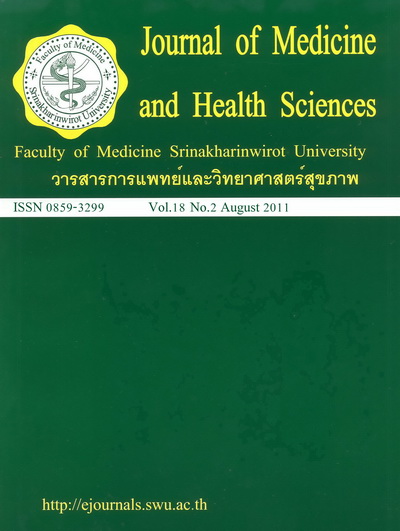Diagnostic imagings of infective spondylitis(การวินิจฉัยการติดเชื้อที่กระดูกสันหลังด้วยการตรวจทางรังสีวิทยา)
Keywords:
Infective spondylitis, Imaging modalities, MRIAbstract
Infective spondylitis represents 2–4% of all cases of osteomyelitis. In Thailand, the common causative organisms included gram positive bacteria especially Staphylococcusaureus (pyogenic spondylitis) and Mycobacterium tuberculosis (tuberculous spondylitis). The spinal bone infection is a serious disease. Delay in diagnosis may cause neurological compromise and late spinal deformities. Paraplegia may be a result of spinal cord compression from epidural abscess or spinal deformities. Therefore, prompt diagnosis and proper treatment are crucial for preventing this long-term disability. Imaging modalities, including plain film, computer tomography (CT scan) and magnetic resonance imaging (MRI) are necessary for early diagnosis. Furthermore, it assists in differential diagnosis, evaluation of extension of infection with special regard to potential neural compromise, guidance of diagnostic biopsy or abscess aspiration, planning of operative procedures and evaluation of therapeutic response. MRI is currently a modality of choice for the diagnosis of spinal infection, due to high sensitivity and specificity.Downloads
Published
2011-08-24
Issue
Section
Review Article


